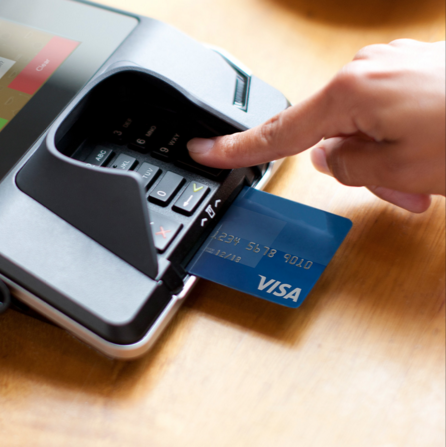By Glenn Taylor, Associate Editor

Last year’s Oct. 1 EMV liability shift was a major point of concern for retailers in the wake of massive data breaches at Target, Home Depot and Michaels. Many merchants were scrambling to upgrade their POS systems so they could avoid future breaches, or at least move some of the responsibility for them to other parties.
But less than five months after the liability shift went into place, only 22% of retailers currently support EMV payments capabilities, according to research from Boston Retail Partners. Adoption going forward isn’t expected to move at a much quicker pace, with just over half (53%) of retailers planning to implement this capability within 12 months.
With only 38% of retailers actually considering payment/data security as a top business priority, it appears that many aren’t in a real hurry to make a change.
From personal experience, I can say that I’ve visited numerous smaller retailers in the past few months that haven’t updated the technology. Even during briefings with SMBs in the months after the shift, I’ve had retail execs indicate that EMV isn’t an option that has even been given much thought, largely due to a lack of funds, manpower and time available to be dedicated to any potential upgrades.
While the lack of implementation didn’t surprise me, the minimal knowledge some companies seemed to have regarding EMV, even after the deadline passed, made me ponder just how well the technology has been publicized.
There’s also been debate that many of these retailers don’t actually have strong incentives to make the upgrade in the first place. Retailers that sell smaller ticket items, for example, aren’t likely to experience the dramatic breaches that department stores and big box retailers have to fight against. As such, these businesses just haven’t felt that the benefits associated with potential upgrades — which could include POS systems offering greater functionality as well as enhanced security — would be worth the price.
Newer payment terminals can cost within a $500 to $1,000 range, so if the retailer doesn’t feel their business is at risk of fraud equal to those kinds of expenses, then they may feel content with their solutions regardless of how outdated they may be.
While the costs vs. benefits argument is compelling for the coffee shops of the world, the fact remains: in the event of a breach, those retailers will be forced to deal with the financial fallout (not to mention the damage to their reputation), and they won’t have the backing of the card issuer or the bank to reimburse their lost funds. As EMV deployment becomes more commonplace throughout the industry, and gains more publicity among consumers, maybe then the retailers who haven’t considered making the effort yet will take steps to onboard the technology.
As 2016 pushes further into gear, I can only hope that the topic of EMV remains top of mind, especially if fraudsters feel they have to resort to using their old tactics at smaller retailers.






